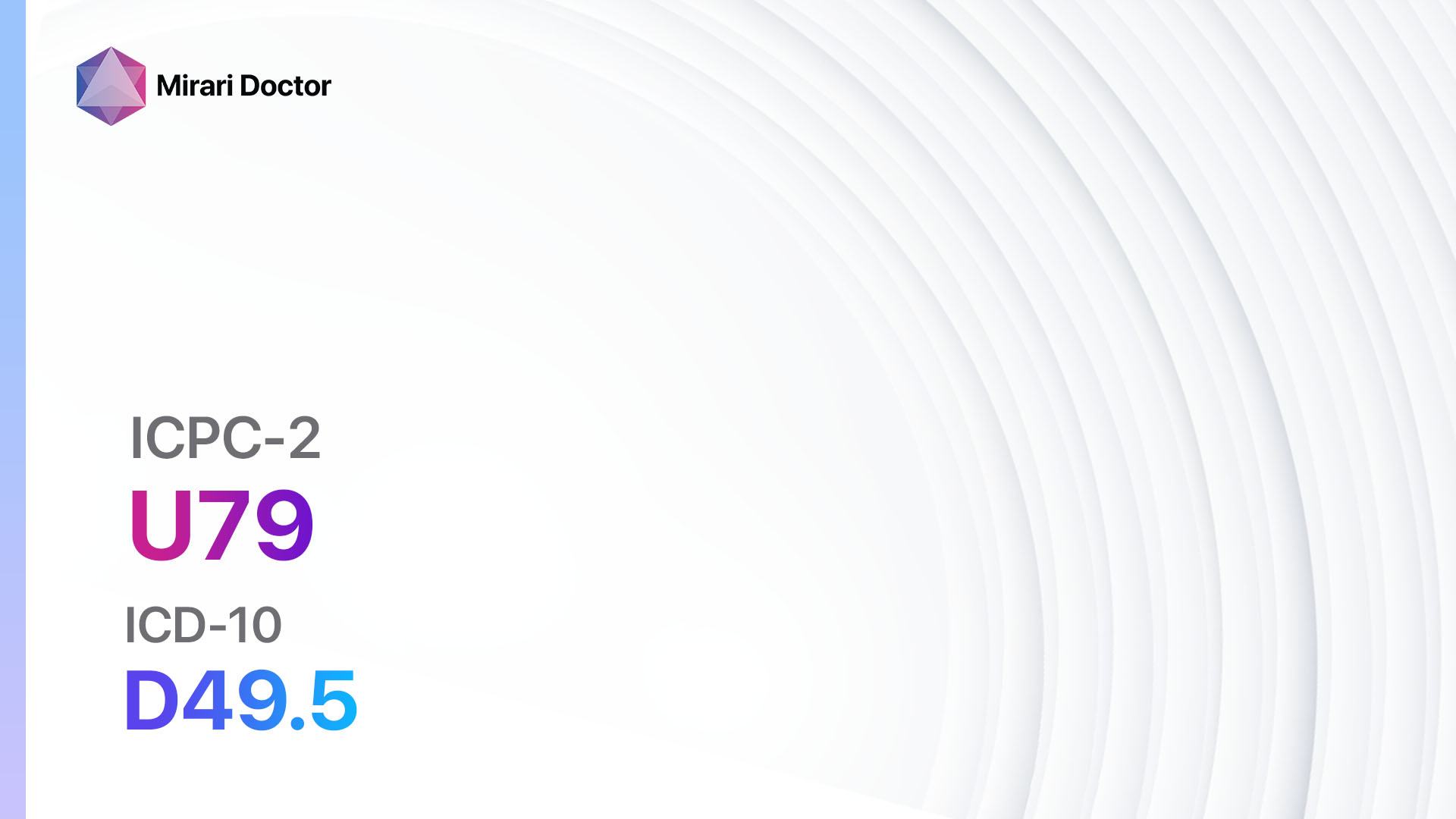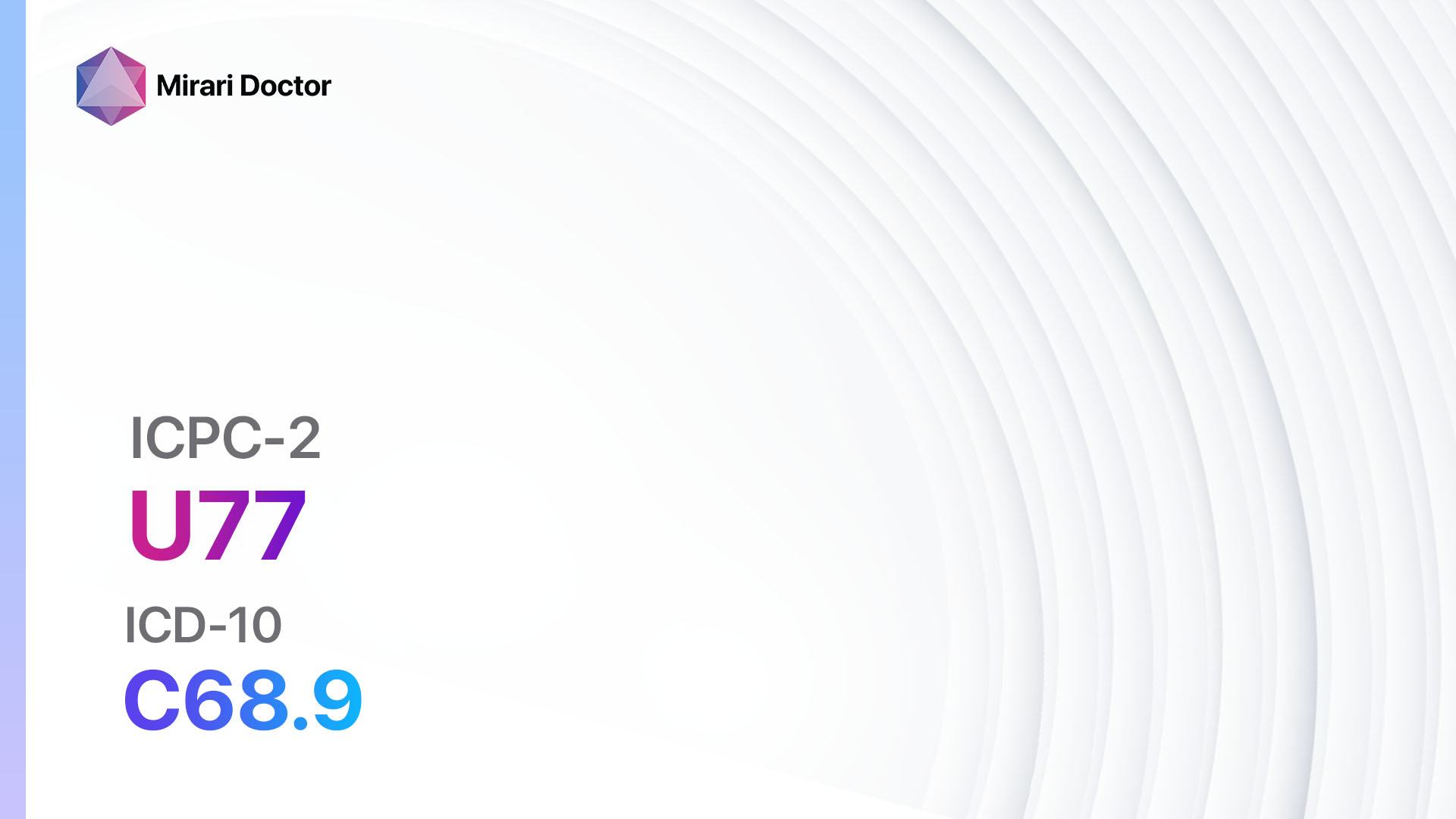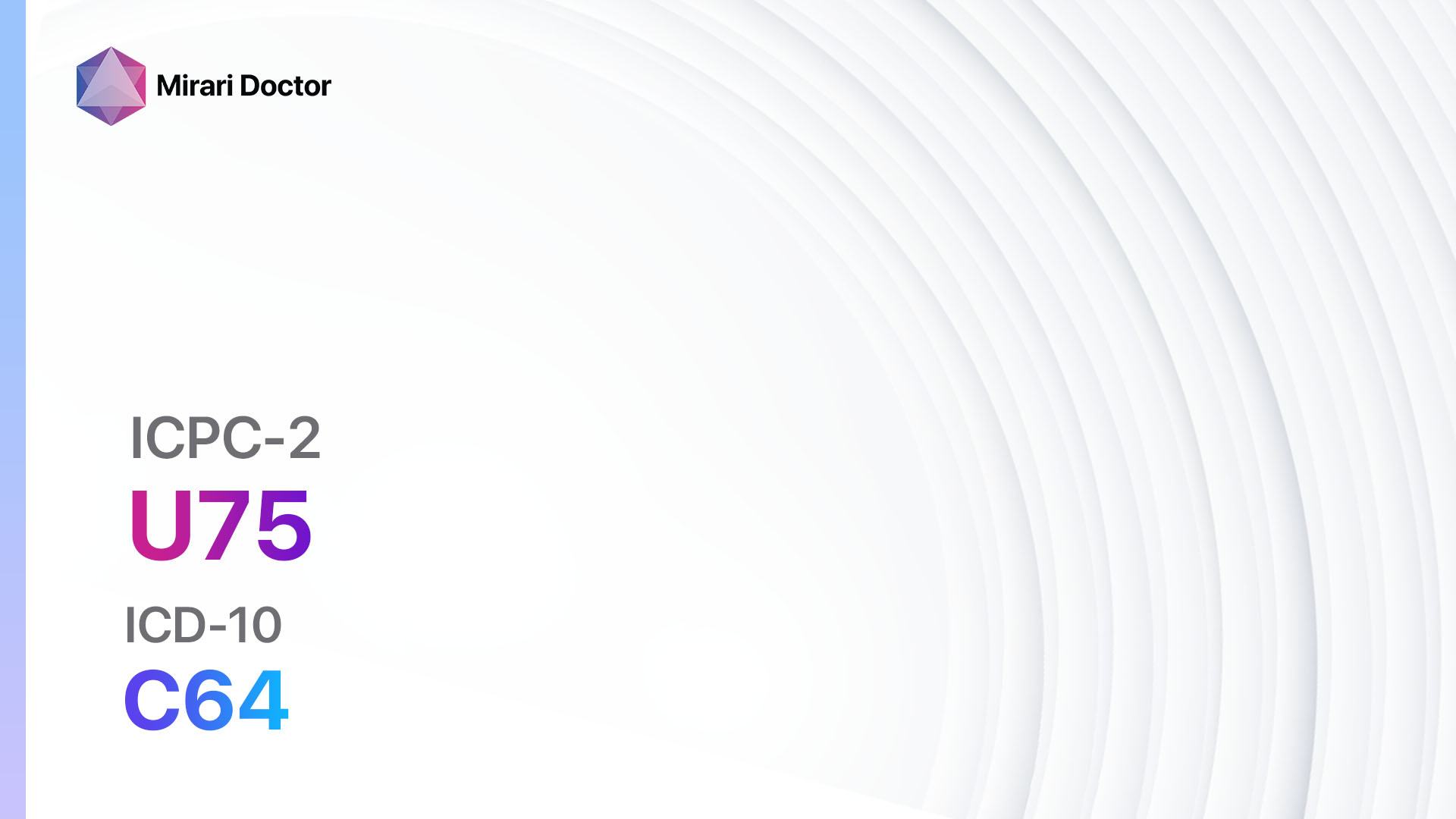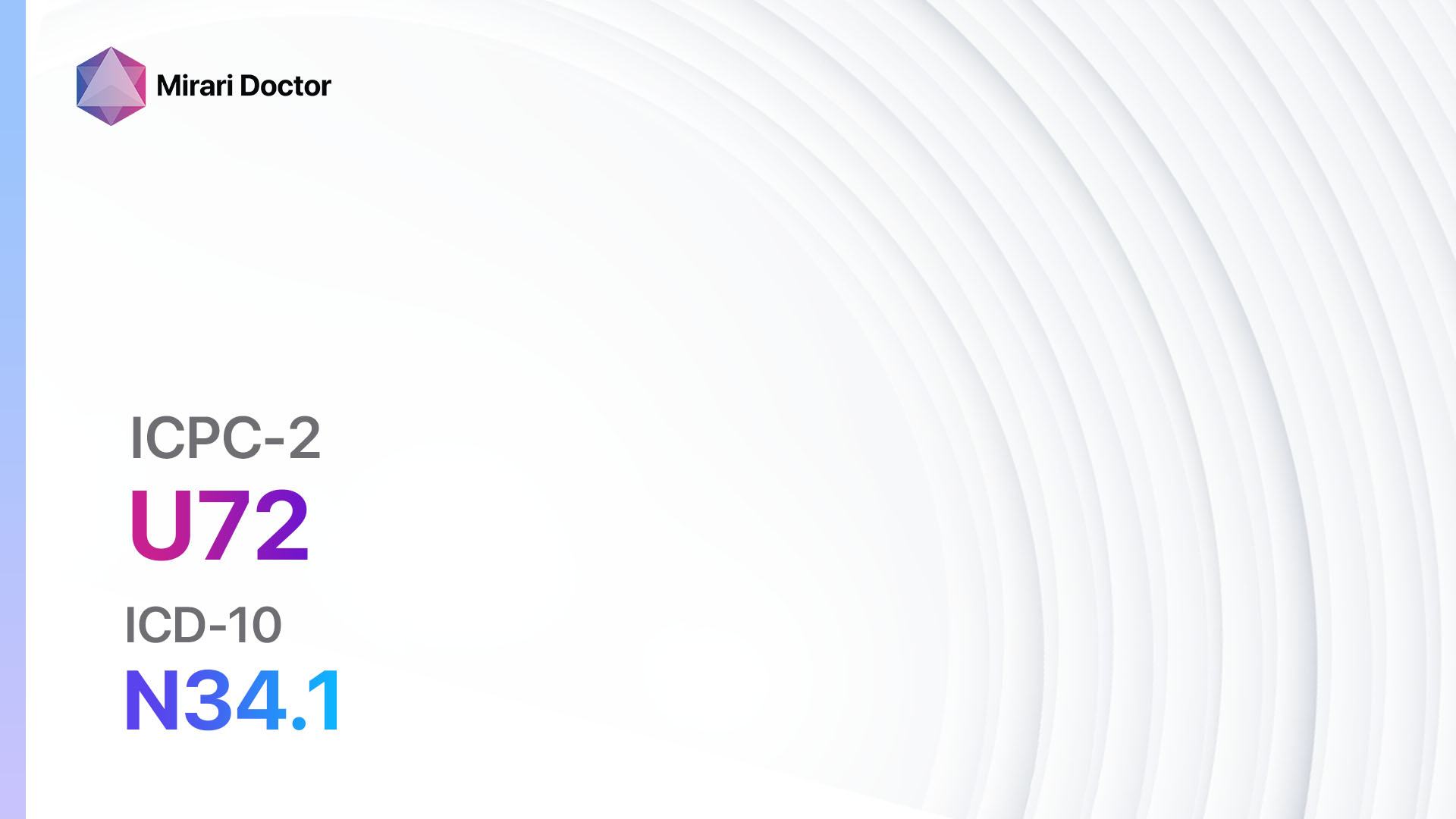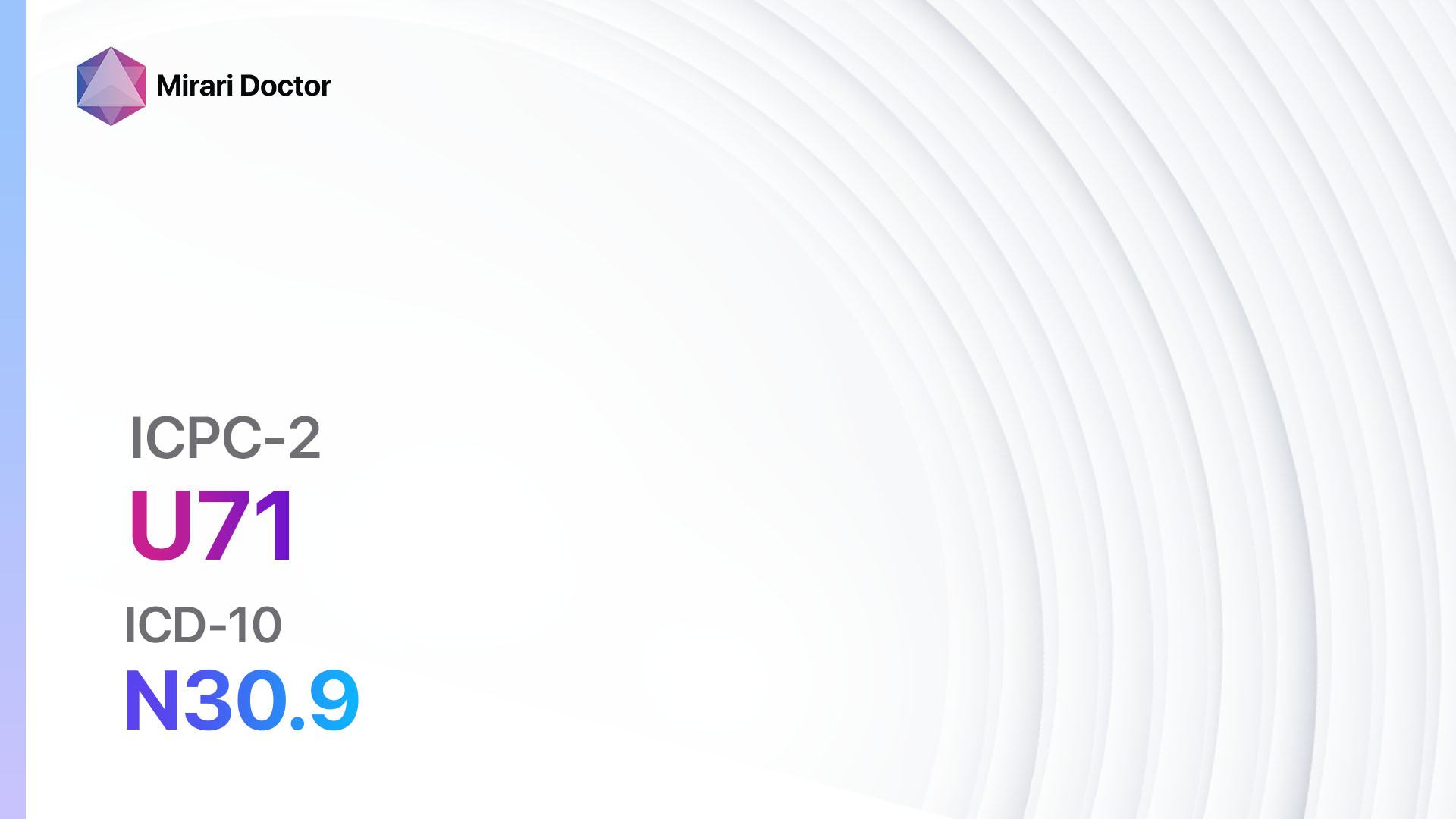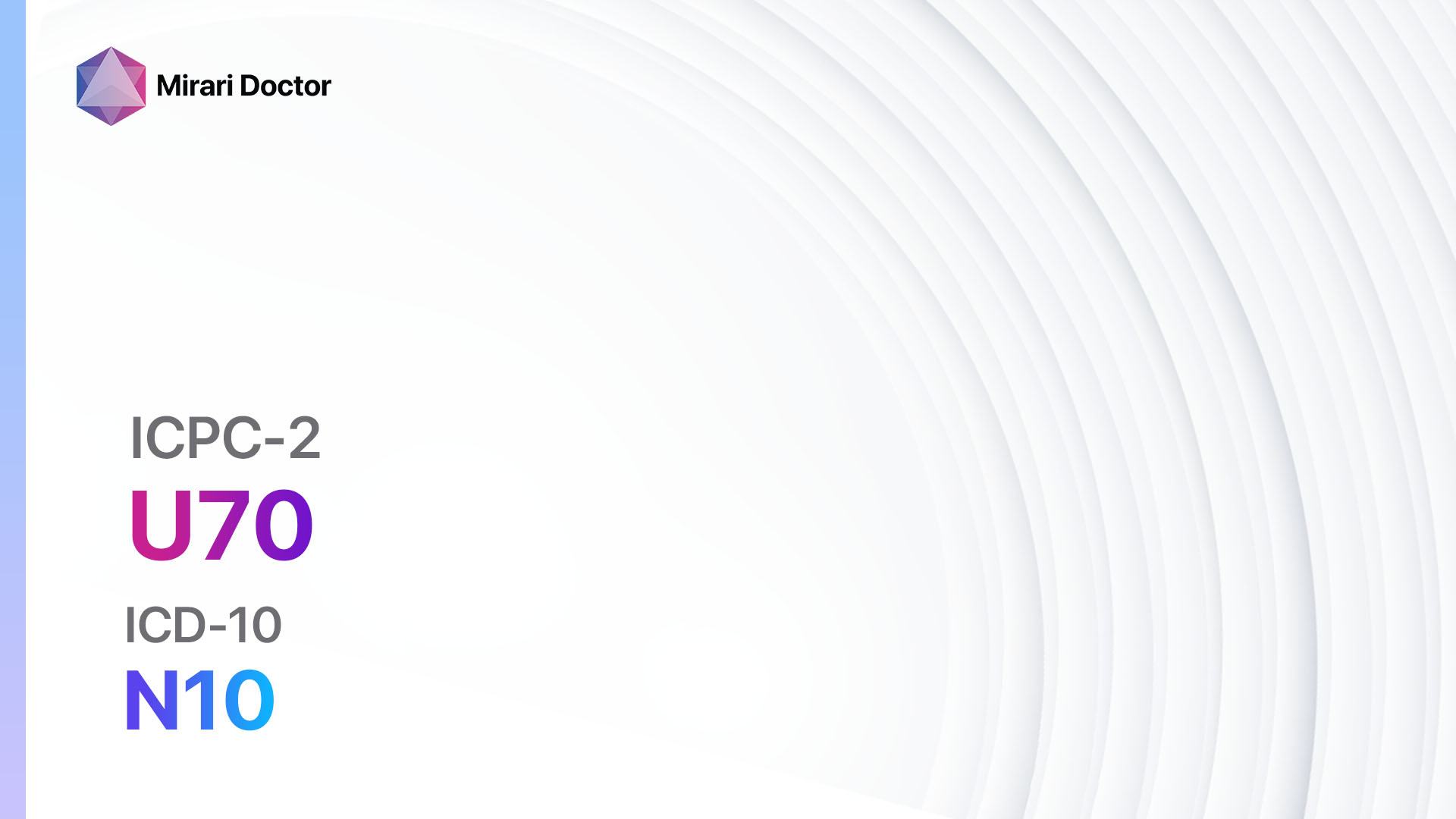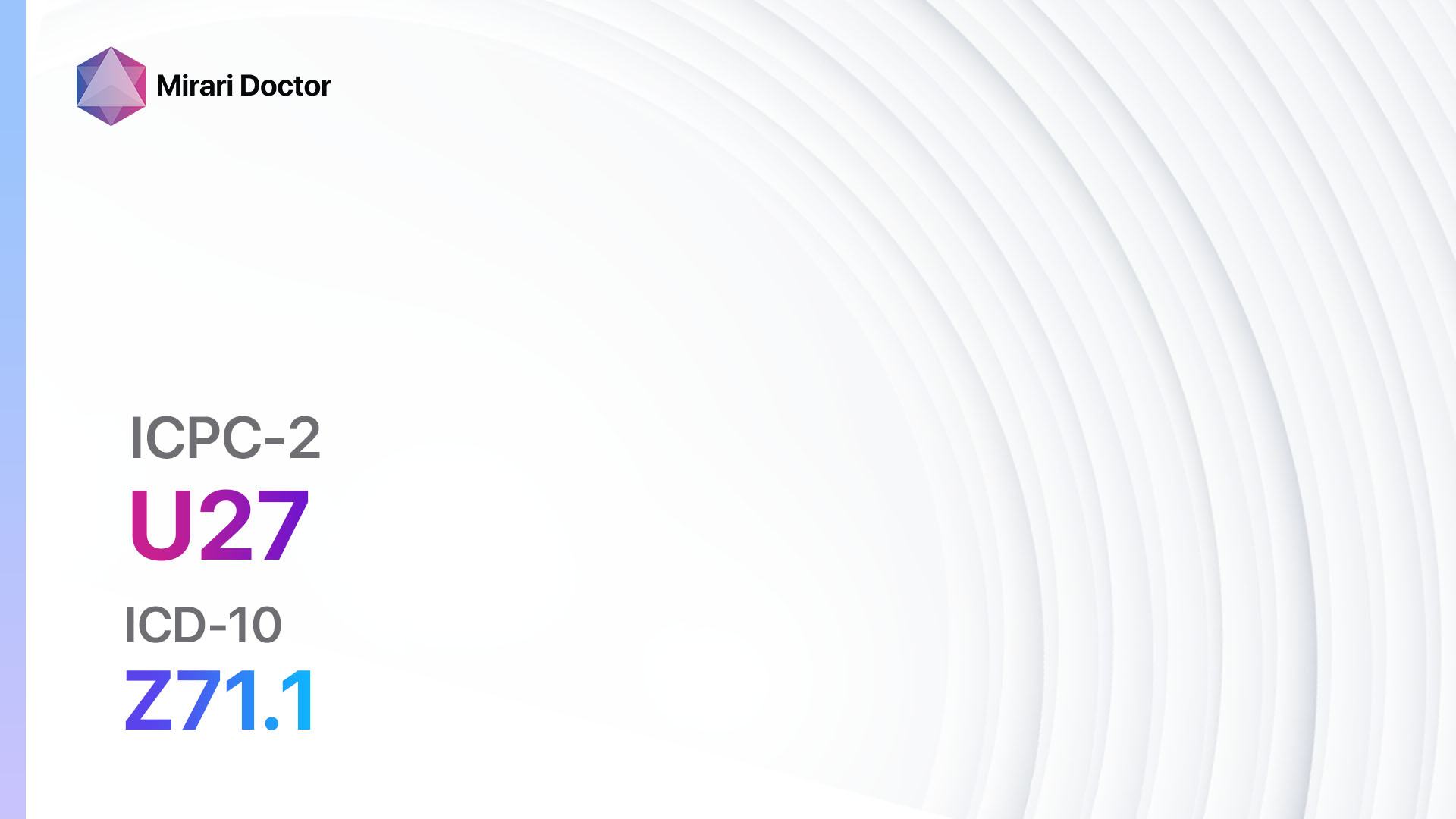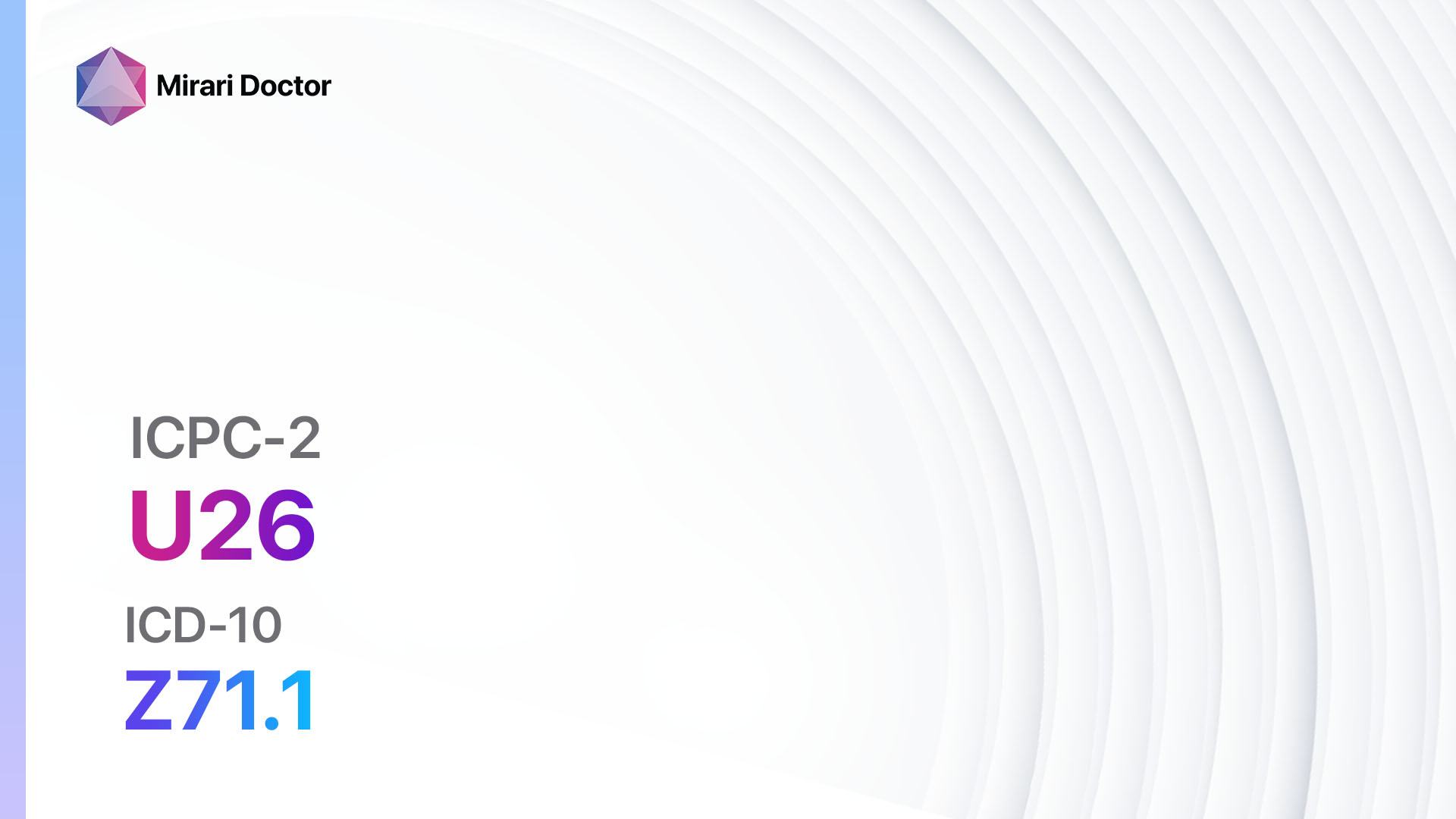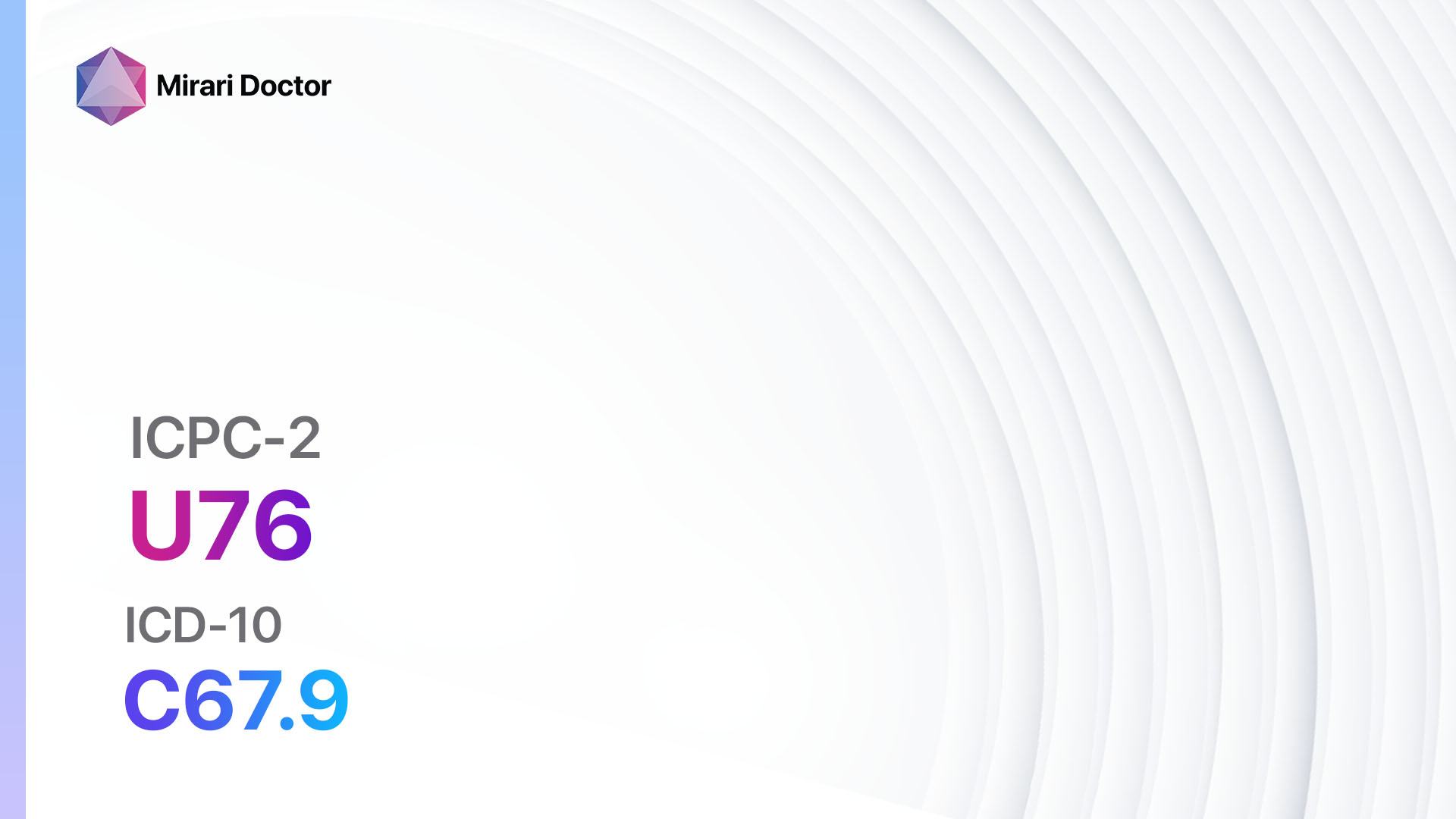
Introduction
Malignant neoplasm of the bladder, also known as bladder cancer, is a type of cancer that starts in the cells of the bladder. It is the fourth most common cancer in men and the tenth most common cancer in women[1]. The aim of this guide is to provide a comprehensive overview of the diagnostic steps, possible interventions, and lifestyle changes that can help manage and treat this condition.
Codes
- ICPC-2 Code: U76 Malignant neoplasm of bladder
- ICD-10 Code: C67.9 Malignant neoplasm of bladder, unspecified
Symptoms
- Hematuria (blood in the urine): This is the most common symptom of bladder cancer.
- The urine may appear pink, red, or brown[2].
- Frequent urination: Patients may experience an increased need to urinate, often with small amounts of urine[3].
- Painful urination: Some patients may experience pain or a burning sensation during urination[4].
- Lower back pain: In advanced stages of bladder cancer, patients may experience lower back pain[5].
- Pelvic pain: Some patients may experience pain in the pelvic area[6].
Causes
- Smoking: Smoking is the most significant risk factor for bladder cancer. Smokers are three times more likely to develop bladder cancer compared to non-smokers[7].
- Exposure to certain chemicals: Occupational exposure to chemicals such as aromatic amines, aniline dyes, and arsenic increases the risk of bladder cancer[8].
- Age: Bladder cancer is more common in older adults, with the average age of diagnosis being 73[9].
- Gender: Men are more likely to develop bladder cancer than women[10].
- Chronic bladder inflammation: Conditions that cause chronic bladder inflammation, such as urinary tract infections or bladder stones, may increase the risk of bladder cancer.
Diagnostic Steps
Medical History
- Gather information about the patient’s risk factors, such as smoking history, occupational exposure to chemicals, and history of chronic bladder inflammation.
- Ask about the patient’s symptoms, including hematuria, frequent urination, and painful urination.
- Inquire about any other medical conditions or medications that may be relevant to the diagnosis.
Physical Examination
- Perform a thorough physical examination, including a pelvic examination for women.
- Palpate the abdomen to check for any masses or abnormalities.
- Check for any signs of advanced disease, such as lower back pain or pelvic pain.
Laboratory Tests
- Urinalysis: A urine sample is analyzed for the presence of blood, abnormal cells, or other signs of bladder cancer.
- Urine cytology: A sample of urine is examined under a microscope to look for cancer cells.
- Blood tests: Blood tests may be done to assess kidney function and overall health.
Diagnostic Imaging
- Ultrasound: An ultrasound may be performed to visualize the bladder and check for any abnormalities.
- CT scan: A CT scan can provide detailed images of the bladder and surrounding structures, helping to determine the stage and extent of the cancer.
- MRI: An MRI may be used to evaluate the bladder and nearby lymph nodes.
Other Tests
- Cystoscopy: A thin, flexible tube with a camera is inserted into the bladder to visualize the inside of the bladder and collect tissue samples for biopsy.
- Biopsy: Tissue samples are taken from the bladder during cystoscopy and examined under a microscope to confirm the diagnosis of bladder cancer and determine the type and stage of the cancer.
- Staging tests: Additional tests, such as bone scans or chest X-rays, may be done to determine if the cancer has spread to other parts of the body.
Follow-up and Patient Education
- Patients should be educated about the importance of regular follow-up appointments to monitor the progression of the disease and assess the effectiveness of treatment.
- Provide information about support groups and resources available for patients with bladder cancer.
Possible Interventions
Traditional Interventions
Medications:
Top 5 drugs for Malignant neoplasm of bladder:
- Cisplatin:
- Cost: $100-$500 per treatment cycle.
- Contraindications: Severe kidney disease, hearing loss.
- Side effects: Nausea, vomiting, kidney damage.
- Severe side effects: Bone marrow suppression, allergic reactions.
- Drug interactions: Aminoglycoside antibiotics, loop diuretics.
- Warning: Regular kidney function tests required.
- Gemcitabine:
- Cost: $1,000-$2,000 per treatment cycle.
- Contraindications: Severe liver disease, pregnancy.
- Side effects: Fatigue, flu-like symptoms, low blood cell counts.
- Severe side effects: Kidney damage, severe allergic reactions.
- Drug interactions: None reported.
- Warning: Monitor kidney function and blood counts regularly.
- Methotrexate:
- Cost: $100-$500 per treatment cycle.
- Contraindications: Severe liver disease, pregnancy.
- Side effects: Nausea, vomiting, mouth sores.
- Severe side effects: Bone marrow suppression, liver damage.
- Drug interactions: Nonsteroidal anti-inflammatory drugs (NSAIDs), penicillin.
- Warning: Regular liver function tests required.
- Vinblastine:
- Cost: $100-$500 per treatment cycle.
- Contraindications: Severe liver disease, pregnancy.
- Side effects: Nausea, vomiting, hair loss.
- Severe side effects: Bone marrow suppression, nerve damage.
- Drug interactions: None reported.
- Warning: Monitor blood counts regularly.
- Pembrolizumab:
- Cost: $10,000-$15,000 per treatment cycle.
- Contraindications: Severe autoimmune disease, pregnancy.
- Side effects: Fatigue, diarrhea, rash.
- Severe side effects: Severe immune reactions, organ damage.
- Drug interactions: None reported.
- Warning: Regular monitoring for immune-related adverse events.
Alternative Drugs:
- Bacillus Calmette-Guérin (BCG): Used for intravesical immunotherapy in non-muscle invasive bladder cancer.
- Mitomycin C: An alternative to BCG for intravesical chemotherapy.
- Docetaxel: Used in combination with other chemotherapy drugs for advanced bladder cancer.
- Epirubicin: Another chemotherapy drug used for bladder cancer.
- Sunitinib: A targeted therapy drug used for advanced bladder cancer.
Surgical Procedures:
- Transurethral resection of bladder tumor (TURBT): The tumor is removed using a cystoscope inserted through the urethra. Cost: $10,000-$20,000.
- Radical cystectomy: The entire bladder is removed, along with nearby lymph nodes and other structures if necessary. Cost: $50,000-$100,000.
- Urinary diversion: After bladder removal, a new way to store and eliminate urine is created. Cost: $20,000-$50,000.
Alternative Interventions
- Acupuncture: May help manage pain and improve overall well-being. Cost: $60-$120 per session.
- Herbal supplements: Some herbal supplements, such as green tea extract and turmeric, may have potential benefits in reducing inflammation and preventing cancer progression. Cost: Varies depending on the specific supplement.
- Mind-body therapies: Techniques such as meditation, yoga, and relaxation exercises may help reduce stress and improve quality of life. Cost: Varies depending on the specific therapy.
- Dietary changes: A healthy diet rich in fruits, vegetables, and whole grains may help support overall health and reduce the risk of cancer. Cost: Varies depending on individual food choices.
- Exercise: Regular physical activity can help improve overall health and well-being. Cost: Varies depending on individual preferences and choices.
Lifestyle Interventions
- Smoking cessation: Quitting smoking is crucial in reducing the risk of bladder cancer and improving treatment outcomes. Cost: Varies depending on the chosen smoking cessation method.
- Healthy diet: Encourage patients to follow a balanced diet that includes a variety of fruits, vegetables, whole grains, and lean proteins. Cost: Varies depending on individual food choices.
- Regular exercise: Encourage patients to engage in regular physical activity, such as walking, swimming, or cycling. Cost: Varies depending on individual preferences and choices.
- Stress management: Teach stress reduction techniques, such as deep breathing exercises, meditation, or mindfulness practices. Cost: Varies depending on the chosen stress management method.
- Limit exposure to chemicals: Advise patients to take precautions to minimize exposure to chemicals that may increase the risk of bladder cancer, such as those found in certain occupations or household products. Cost: Varies depending on individual circumstances.
It is important to note that the cost ranges provided are approximate and may vary depending on the location and availability of the interventions.
Mirari Cold Plasma Alternative Intervention
Understanding Mirari Cold Plasma
- Safe and Non-Invasive Treatment: Mirari Cold Plasma is a safe and non-invasive treatment option for various skin conditions. It does not require incisions, minimizing the risk of scarring, bleeding, or tissue damage.
- Efficient Extraction of Foreign Bodies: Mirari Cold Plasma facilitates the removal of foreign bodies from the skin by degrading and dissociating organic matter, allowing easier access and extraction.
- Pain Reduction and Comfort: Mirari Cold Plasma has a local analgesic effect, providing pain relief during the treatment, making it more comfortable for the patient.
- Reduced Risk of Infection: Mirari Cold Plasma has antimicrobial properties, effectively killing bacteria and reducing the risk of infection.
- Accelerated Healing and Minimal Scarring: Mirari Cold Plasma stimulates wound healing and tissue regeneration, reducing healing time and minimizing the formation of scars.
Mirari Cold Plasma Prescription
Video instructions for using Mirari Cold Plasma Device – U76 Malignant neoplasm of bladder (ICD-10:C67.9)
| Mild | Moderate | Severe |
| Mode setting: 1 (Infection) Location: 2 (Prostate & Uterus) Morning: 15 minutes, Evening: 15 minutes |
Mode setting: 1 (Infection) Location: 2 (Prostate & Uterus) Morning: 30 minutes, Lunch: 30 minutes, Evening: 30 minutes |
Mode setting: 1 (Infection) Location: 2 (Prostate & Uterus) Morning: 30 minutes, Lunch: 30 minutes, Evening: 30 minutes |
| Mode setting: 3 (Antiviral Therapy) Location: 2 (Prostate & Uterus) Morning: 15 minutes, Evening: 15 minutes |
Mode setting: 3 (Antiviral Therapy) Location: 2 (Prostate & Uterus) Morning: 30 minutes, Lunch: 30 minutes, Evening: 30 minutes |
Mode setting: 3 (Antiviral Therapy) Location: 2 (Prostate & Uterus) Morning: 30 minutes, Lunch: 30 minutes, Evening: 30 minutes |
| Mode setting: 6 (Liver/Kidney Therapy) Location: 3 (Kidney, Liver & Spleen) Morning: 15 minutes, Evening: 15 minutes |
Mode setting: 6 (Liver/Kidney Therapy) Location: 3 (Kidney, Liver & Spleen) Morning: 30 minutes, Lunch: 30 minutes, Evening: 30 minutes |
Mode setting: 6 (Liver/Kidney Therapy) Location: 3 (Kidney, Liver & Spleen) Morning: 30 minutes, Lunch: 30 minutes, Evening: 30 minutes |
| Mode setting: 7 (Immunotherapy) Location: 1 (Sacrum) Morning: 15 minutes, Evening: 15 minutes |
Mode setting:7 (Immunotherapy) Location: 1 (Sacrum) Morning: 30 minutes, Lunch: 30 minutes, Evening: 30 minutes |
Mode setting:7 (Immunotherapy) Location: 1 (Sacrum) Morning: 30 minutes, Lunch: 30 minutes, Evening: 30 minutes |
| Total Morning: 60 minutes approx. $10 USD, Evening: 60 minutes approx. $10 USD |
Total Morning: 120 minutes approx. $20 USD, Lunch: 120 minutes approx. $20 USD, Evening: 120 minutes approx. $20 USD, |
Total Morning: 120 minutes approx. $20 USD, Lunch: 120 minutes approx. $20 USD, Evening: 120 minutes approx. $20 USD, |
| Usual treatment for 7-60 days approx. $140 USD – $1200 USD | Usual treatment for 6-8 weeks approx. $2,520 USD – $3,360 USD |
Usual treatment for 3-6 months approx. $5,400 USD – $10,800 USD
|
 |
|
Use the Mirari Cold Plasma device to treat Malignant neoplasm of bladder effectively.
WARNING: MIRARI COLD PLASMA IS DESIGNED FOR THE HUMAN BODY WITHOUT ANY ARTIFICIAL OR THIRD PARTY PRODUCTS. USE OF OTHER PRODUCTS IN COMBINATION WITH MIRARI COLD PLASMA MAY CAUSE UNPREDICTABLE EFFECTS, HARM OR INJURY. PLEASE CONSULT A MEDICAL PROFESSIONAL BEFORE COMBINING ANY OTHER PRODUCTS WITH USE OF MIRARI.
Step 1: Cleanse the Skin
- Start by cleaning the affected area of the skin with a gentle cleanser or mild soap and water. Gently pat the area dry with a clean towel.
Step 2: Prepare the Mirari Cold Plasma device
- Ensure that the Mirari Cold Plasma device is fully charged or has fresh batteries as per the manufacturer’s instructions. Make sure the device is clean and in good working condition.
- Switch on the Mirari device using the power button or by following the specific instructions provided with the device.
- Some Mirari devices may have adjustable settings for intensity or treatment duration. Follow the manufacturer’s instructions to select the appropriate settings based on your needs and the recommended guidelines.
Step 3: Apply the Device
- Place the Mirari device in direct contact with the affected area of the skin. Gently glide or hold the device over the skin surface, ensuring even coverage of the area experiencing.
- Slowly move the Mirari device in a circular motion or follow a specific pattern as indicated in the user manual. This helps ensure thorough treatment coverage.
Step 4: Monitor and Assess:
- Keep track of your progress and evaluate the effectiveness of the Mirari device in managing your Malignant neoplasm of bladder. If you have any concerns or notice any adverse reactions, consult with your health care professional.
Note
This guide is for informational purposes only and should not replace the advice of a medical professional. Always consult with your healthcare provider or a qualified medical professional for personal advice, diagnosis, or treatment. Do not solely rely on the information presented here for decisions about your health. Use of this information is at your own risk. The authors of this guide, nor any associated entities or platforms, are not responsible for any potential adverse effects or outcomes based on the content.
Mirari Cold Plasma System Disclaimer
- Purpose: The Mirari Cold Plasma System is a Class 2 medical device designed for use by trained healthcare professionals. It is registered for use in Thailand and Vietnam. It is not intended for use outside of these locations.
- Informational Use: The content and information provided with the device are for educational and informational purposes only. They are not a substitute for professional medical advice or care.
- Variable Outcomes: While the device is approved for specific uses, individual outcomes can differ. We do not assert or guarantee specific medical outcomes.
- Consultation: Prior to utilizing the device or making decisions based on its content, it is essential to consult with a Certified Mirari Tele-Therapist and your medical healthcare provider regarding specific protocols.
- Liability: By using this device, users are acknowledging and accepting all potential risks. Neither the manufacturer nor the distributor will be held accountable for any adverse reactions, injuries, or damages stemming from its use.
- Geographical Availability: This device has received approval for designated purposes by the Thai and Vietnam FDA. As of now, outside of Thailand and Vietnam, the Mirari Cold Plasma System is not available for purchase or use.
References
- American Cancer Society. Key Statistics for Bladder Cancer. https://www.cancer.org/cancer/types/bladder-cancer/about/key-statistics.html
- Mayo Clinic. Bladder cancer – Symptoms and causes. https://www.mayoclinic.org/diseases-conditions/bladder-cancer/symptoms-causes/syc-20356104
- NHS. Bladder cancer – Symptoms. https://www.nhs.uk/conditions/bladder-cancer/symptoms/
- American Cancer Society. Signs and Symptoms of Bladder Cancer. https://www.cancer.org/cancer/types/bladder-cancer/detection-diagnosis-staging/signs-and-symptoms.html
- Cancer Research UK. Symptoms of advanced bladder cancer. https://www.cancerresearchuk.org/about-cancer/bladder-cancer/advanced-cancer/symptoms-advanced-cancer
- Healthline. Bladder Cancer: Symptoms, Causes, Diagnosis, and Treatment. https://www.healthline.com/health/bladder-cancer
- American Cancer Society. Bladder Cancer Risk Factors. https://www.cancer.org/cancer/types/bladder-cancer/causes-risks-prevention/risk-factors.html
- National Cancer Institute. Bladder Cancer Risk Factors. https://www.cancer.gov/types/bladder/patient/bladder-prevention-pdq#section/_3
- UF Health. Patient education – Kidney cancer. https://ufhealth.org/conditions-and-treatments/kidney-cancer/patient-education
- PMC. Imaging Advances in the Management of Kidney Cancer. https://www.ncbi.nlm.nih.gov/pmc/articles/PMC6299343/
Related articles
Made in USA









